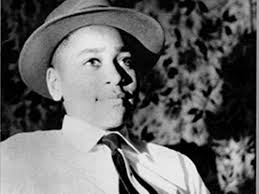
Visitors to Harold Washington Library and 88 satellite libraries will have an opportunity to explore the treasured archives of the iconic Chicago Defender newspaper. Still making history, the company hired the paper’s first female publisher, Cheryl Mainor, who in turn hired the first female executive editor, Kai EL’Zabar, in 2014.
A four-month exhibition of images and memorabilia from the Chicago Defender’s historical archives titled “Journey to Empowerment” opened to the public on Wednesday, March 11 at 6 p.m. at the Harold Washington Library, 400 S. State Street, in the Special Collections Gallery. There was a special book signing of a biography of Ethel Payne written by James McGrath Morris. Known as the “First Lady of the Black Press,” Payne was a Chicago Defender reporter for many years. In Eye on the Struggle: Ethel Payne, the First Lady of the Black Press, Morris illuminates this ambitious, influential and groundbreaking woman’s life, from her childhood growing up in South Chicago to her career as a journalist and network news commentator covering some of the most crucial events in modern American history.
The exhibit will be on view through June 28. The Chicago Defender hosted a reception last month at its offices as a prelude to the exhibition. Guests at the reception had a sneak peek of images that captured news of the past as snapshots of the “Journey” that will be on display at the library.
Celebrating 110 years of the legendary newspaper, viewers will first learn of Robert S. Abbott’s vision and drive, taking a walk through the newspaper’s front pages and photos that detail a history of “The Race” in Chicago. The exhibition offers a visual experience of the “Journey to Empowerment” through the eyes of Black Chicago, providing an insight into the migration of a people. Images of people, events and actual old newspapers fill the gallery while gracing the viewer with the opportunity to be a voyeur who sees events from the perspective of those upon whose shoulders we stand.
Photos of movie stars of the day, musicians who rocked the charts, politicians who changed history, cartoons that captured “Blackisms” and the writings of some of the nation’s best writers, including Langston Hughes, Earl Calloway, Ethel Payne, Gwendolyn Brooks and Willard Motley — whose pen name was Bud Billiken — are all on view.
For the children, there is a “soft-tech” wall that allows them to be Junior Billiken Reporters for the day!
“JTE 110 is a look back at the genius and heart that pioneered this paper and the paper’s propulsion into the 21st century,” said Candace Hunter, “Journey to Empowerment’s” curator and Chicago Defender’s arts and culture reporter.
The journey began during World War I when the Defender utilized its influence to wage a successful campaign in support of “The Great Migration.” It published blazing editorials, articles and cartoons lauding the benefits of the North, posted job listings and train schedules to facilitate the relocation and went so far as to declare May 15, 1917 the date of “The Great Northern Drive.” The Chicago Defender’s support of The Great Migration caused Southern readers to migrate to the North in record numbers. Between 1916 and 1918, at least 110,000 people migrated to Chicago, nearly tripling the city’s Black population.
So expect to bear witness to the rich, dynamic past and present of African Americans and have your senses flooded with a waterfall of joyful memories.
The exhibition shows how history was recorded at that moment in time and how we are communicating history in the present for the enrichment of our future.
